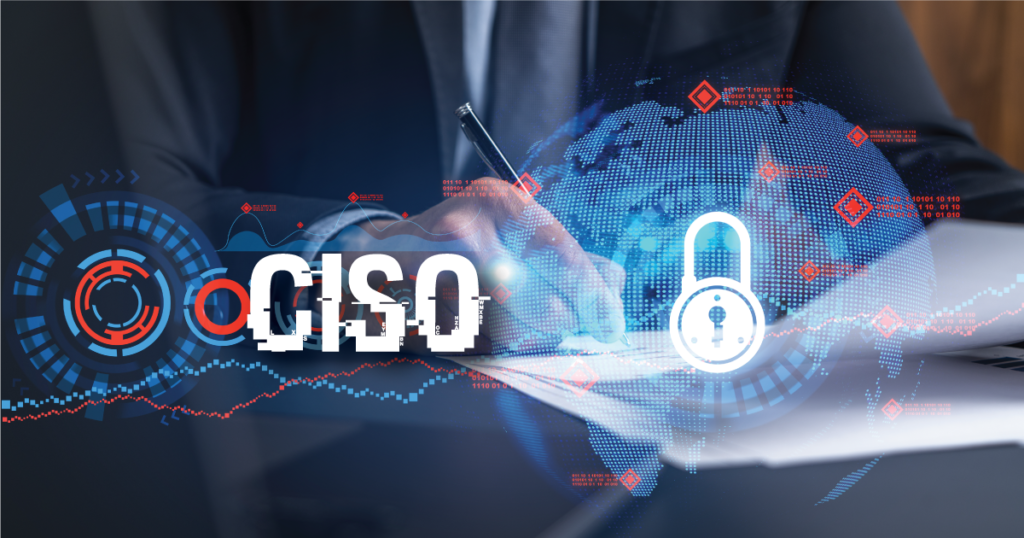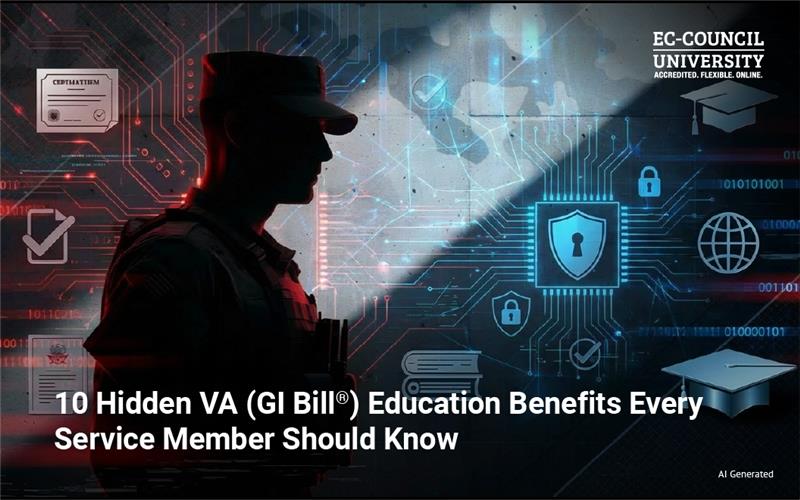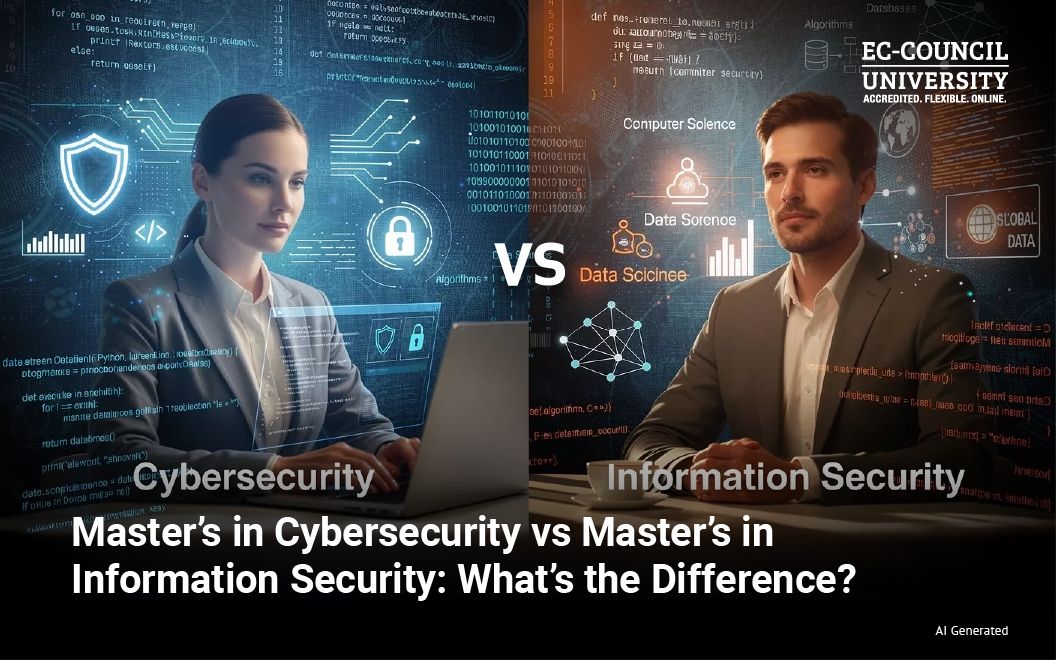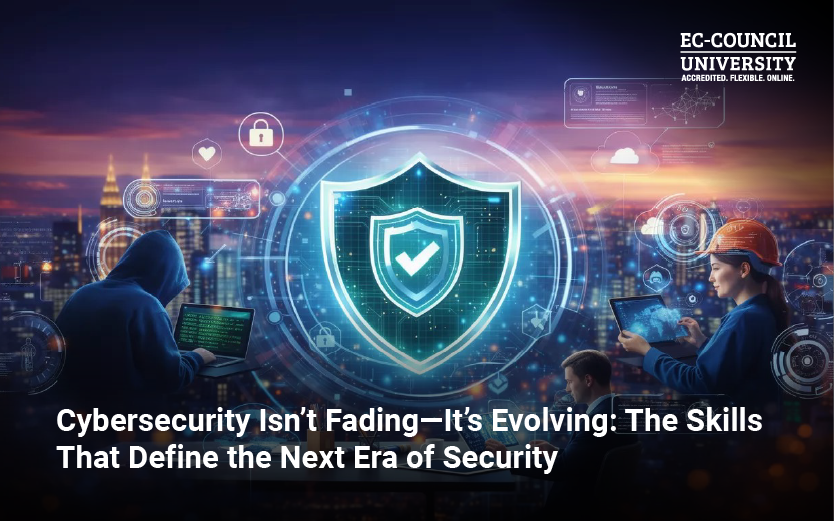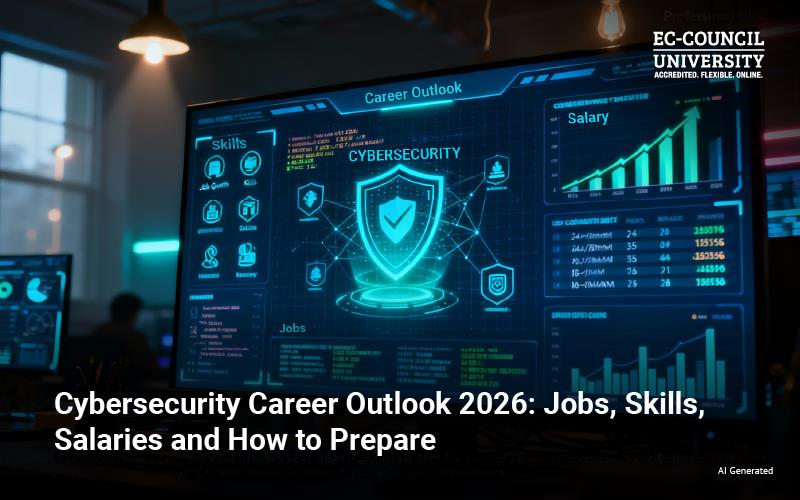Although the title of chief information security officer—or “CISO”—has only been around since the mid-90s, CISOs have quickly become indispensable to many organizations across a wide range of industries (Morgan, 2020). Have you ever wondered how CISOs approach cybersecurity and management? What challenges do they face, and what skills do they need to develop to overcome those challenges?
In this article, we’ll outline the unique role that CISOs play in organizations as well as the skills and qualifications that a CISO should possess. We’ll also explain how the cybersecurity master’s degree program at EC-Council University (ECCU) can benefit individuals seeking careers in this high-level cybersecurity position.
Understanding the Role of a CISO
While CISOs are the highest-ranking members of the cybersecurity hierarchy, their role demands much more than just a deep understanding of information security. As C-suite executives, CISOs need to balance a focus on information security with a well-honed business sense. For a CISO, understanding an organization’s strategic vision and protecting its information technology (IT) infrastructure are both part of the job.
A CISO’s primary responsibilities include:
- Hiring and leading a team of cybersecurity professionals
- Overseeing the development of information security solutions
- Creating strategic IT security plans in association with the rest of the executive team
- Collaborating across multiple departments to maintain a secure IT infrastructure
- Tracking security incidents from identification to resolution
- Regularly conducting and updating cybersecurity awareness programs for employees
- Planning, forecasting, and managing security budgets
- Monitoring software releases and upgrades
- Ensuring that network upgrades are completed on time
- Confirming that IT projects are completed without violating security standards
What’s the Difference Between a CISO and CIO?
The distinction between a CISO and a chief information officer (CIO) is subtle, and many organizations blur this line by combining the two roles into a single position. Both CIOs and CISOs need IT expertise as well as leadership skills. However, CIOs are normally in charge of an organization’s IT activities and initiatives in general, whereas CISOs are more narrowly focused on security-related concerns like cyber risk management, data protection, and security awareness training (Hiter, 2021).
CISO Key Competencies
Risk Management
Organizations rely on many tools, third-party vendors, and applications to automate and execute work processes, all of which pose potential risks. As a result, the scope of IT security implementation is broad, incorporating not just internal organization members but also vendors, partners, visitors, remote employees, and all devices and individuals directly or indirectly connected to the organization’s IT infrastructure.
Because all of these associations present security challenges, risk management is a critical skill for CISOs. To prevent information loss, damage, and theft, a CISO needs to have a solid knowledge of risk management. This means understanding the flow of information within and outside the organization and defining security policies accordingly, including overseeing software patch management.
Compliance
CISOs are in charge of making sure that their organization follows all applicable laws, regulations, and industry standards. They oversee their organization’s compliance with the security-related statutes and regulations in force where the organization operates, such as Europe’s General Data Protection Regulation (GDPR) and the U.S. Health Insurance Portability and Accountability Act (HIPAA) and Cybersecurity Information Sharing Act (CISA).
Depending on their organization’s specific operations and needs, CISOs may also need to consider cybersecurity frameworks and standards that don’t have the power of law but are still contractually required by business partners or widely adopted in their industry (Baadsgaard, 2021). Examples of commonly used industry frameworks and standards include the Payment Card Industry Data Security Standard (PCI DSS), the National Institute of Standards and Technology (NIST) Cybersecurity Framework, and the International Organization for Standardization (ISO) Standard ISO/IEC 27001.
Technical Proficiency in Cybersecurity
While CISOs hold a C-level position that requires strong management and leadership skills, they must also be well versed in cybersecurity. A CISO should be capable of managing complex IT architectures and have a thorough understanding of the activities and tools associated with IT operations.
While CISOs are not typically involved in the day-to-day execution of cybersecurity and IT functions, they are responsible for managing and coordinating vulnerability scans, security assessments, penetration tests, secure coding practices, and so on. To perform these duties effectively, they need extensive cybersecurity expertise. Crucial IT and cybersecurity topics for CISOs include:
- Security architecture development
- Incident response and remediation
- Disaster recovery planning
- Mobile and endpoint management
- Remote device management
- Identity and access management
- Data and information management
- Security policy and framework implementation
- Application and database security
- Management of network security and firewalls
Communication and Leadership
CISOs hold a highly influential position at the top of the corporate ladder. As such, they frequently represent their organization when speaking with external stakeholders, law enforcement and government agencies, and the media about cybersecurity developments and concerns.
In addition to representing their company to outsiders, a CISO is also typically responsible for communicating security policies and raising security awareness internally among their organization’s personnel. Given these responsibilities, CISOs are therefore expected to be high-energy individuals with outstanding communication and leadership abilities.
How to Become a CISO
Attaining this high-level position involves several steps, including gaining the necessary education, experience, and certifications.
1. Obtain Bachelor’s and Master’s Degrees
Many CISOs have bachelor’s and master’s degrees, generally in cybersecurity or a related subject. Because the CISO position involves complex job duties and considerable responsibility, a Master of Science degree is expected at many organizations—and can significantly boost your earning potential (Indeed, 2021).
Many universities today offer online master’s programs in cybersecurity. If you’re already in the workforce, an online learning program can help you pursue a degree without leaving your current job. At ECCU, we offer a fully online Master of Science in Cybersecurity (MSCS) program, including a specialization in Executive Leadership in Information Assurance designed to prepare you for a career in cybersecurity leadership.
2. Get Certified
Obtaining industry-recognized certifications is essential to secure a high-level cybersecurity position, as these credentials serve as proof of your knowledge and abilities. Certifications provide and validate specialized expertise in specific areas of cybersecurity, like network security and penetration testing.
EC-Council offers a leading certification for aspiring cybersecurity executives: the Certified Chief Information Security Officer (C|CISO). In addition to this CISO-specific credential, it’s also a great idea to pursue other certifications that demonstrate your proficiency in multiple technical areas, such as ethical hacking, computer forensics, or any other topic connected to your field and interests.
3. Build Technical and Management Experience
While degrees and certifications are important prerequisites for a CISO role, a great education alone isn’t enough—to be considered for a position at the top of the cybersecurity hierarchy, you’ll need to have relevant experience to back up your academic credentials.
CISOs have to demonstrate a unique blend of IT and managerial abilities. To build a strong resume, start by refining your technical skills. To be eligible for EC-Council’s C|CISO certification, candidates need experience in each of the five C|CISO domains:
- Governance, risk, and compliance
- Information security controls and audit management
- Security program management and operations
- Information security core competencies
- Strategic planning, finance, procurement, and third-party management
In addition to learning and developing skills in each of these areas, seek out experience in leadership and management. Any prospective CISO must prove their ability to successfully lead teams, collaborate effectively across departments, and establish and enforce high-level policy and strategy.
Start Your CISO Journey with EC-Council University
EC-Council University offers a Bachelor of Science in Cybersecurity (BSCS) in addition to the MSCS. Both of these 2-year degree programs are 100% online. In addition, ECCU curricula are mapped to the content covered in EC-Council’s leading certification courses, preparing degree candidates to acquire industry-recognized certifications in addition to their MSCS.
Students in the MSCS program’s Executive Leadership in Information Assurance specialization will learn the material covered in three EC-Council certifications: the C|CISO, Certified Network Defender (C|ND), and Certified Ethical Hacker (C|EH). With an ECCU master’s degree and EC-Council’s C|CISO, C|EH, and C|ND certifications, you’ll be able to demonstrate your proficiency in the technical and non-technical skills that any CISO is expected to have.
Found this article interesting? Follow EC-Council University on Facebook, Twitter, Instagram and LinkedIn to read more exclusive content.
References
Baadsgaard, J. (2021). Cybersecurity laws & regulations. IPOhub.
Hiter, S. (2021, November 11). CIO vs. CISO: What are the 5 big differences? CIO Insight.
Indeed. (2021). How to become a chief information security officer.
Morgan, S. (2020, October 13). Backstory of the world’s first chief information security officer. Cybercrime Magazine.

